What is Building?
A building is a man-made structure, constructed from any materials, with walls and a roof, resting on a foundation, and intended for any purpose. It includes all components such as foundations, plinths, walls, floors, roofs, chimneys, plumbing, and various building services, as well as permanent features like verandas, balconies, cornices, projections, and any element affixed to the structure. Buildings serve various societal needs, primarily as shelter, living space, privacy, security, storage, and workspace. However, temporary structures like tents, shamianas, and tarpaulin shelters are excluded from this definition.
Types of Buildings in Civil Engineering
Buildings can be classified into different categories based on their occupancy characteristics or type of use. Let’s explore them in detail…
Residential Buildings

A residential building is a place where people live. If more than 50% of the building spaces are used for living, it’s a residential building. It’s built for people to call home, whether it’s a family, just one person, a couple or a group of friends.
A home usually has a bedroom to sleep in, a living room to relax in, a bathroom, and a kitchen to cook in. These rooms can be shared or separate.
Even if a building just has a bedroom, it’s also considered as residential.
Here are some examples of residential buildings-
- Private Residences
- Apartments
- Hotels
- Dormitories
- Cottages
- Semi-detached Buildings
- Storey Houses
- Duplex, Triplex, and so on.
Institutional Buildings
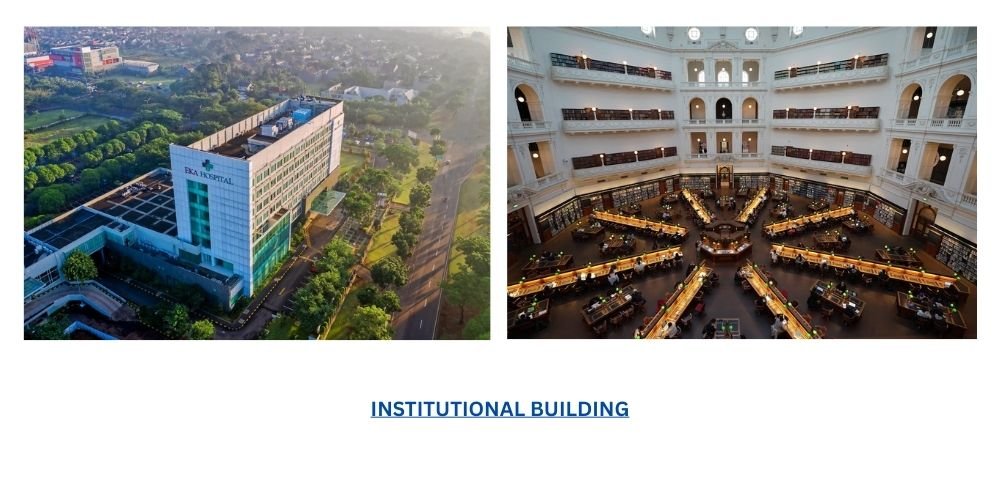
Institutional buildings are large structures serving various purposes, including medical treatment, care for the physically or mentally ill, care for infants and the elderly, and custodial or correctional care, where occupants’ freedom may be limited.
These buildings usually have places for people to sleep because people often stay there for a long time.
They include hospitals, nursing homes, orphanages, sanatoria, jails, prisons, mental hospitals, museums, courts, post offices, libraries, military facilities, and community centers, which are there to help everyone. Basically, they’re buildings that serve a community’s needs.
Educational Buildings
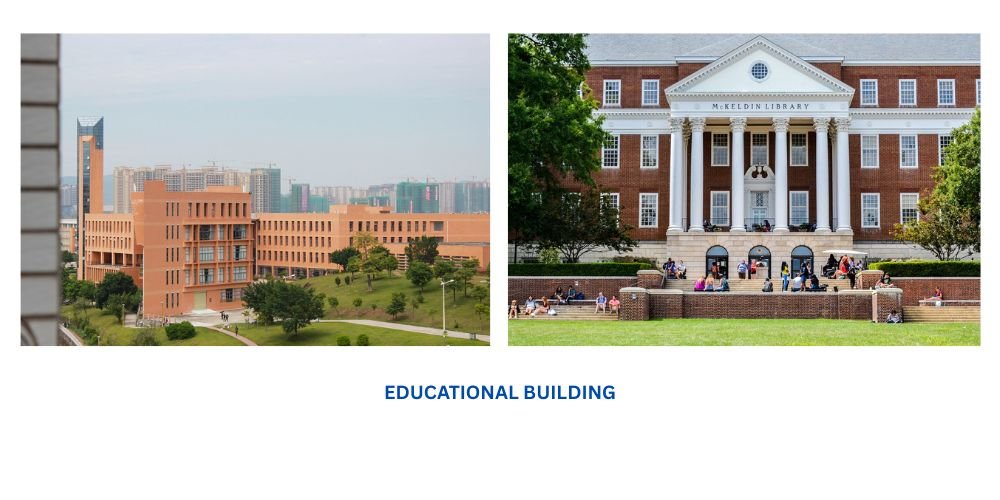
Educational buildings are structures used primarily for teaching and learning. This includes schools, colleges, universities, training institutes, and day-care centers.
These facilities are equipped with classrooms, laboratories, libraries, and other essential resources to provide a safe and conducive learning environment for all levels of education, from pre-kindergarten to college. They can be run by the government or by private groups.
Assembly Buildings

Assembly buildings are structures designed to accommodate gatherings of people for social, recreational, religious, or civic activities. These buildings, typically public, serve as venues for events such as performances, exhibitions, dining, and public transportation services. They include hotels, restaurants, clubs, theatres, exposition halls, auditoriums, places of worship, dance halls, club rooms, passenger stations, terminals for air, surface, and other public transportation services, recreation centers, stadiums, cinemas, banquet halls, town halls, assembly halls, and museums.
Basically, any place where lots of people gather for a shared activity is an assembly building.
Business Buildings
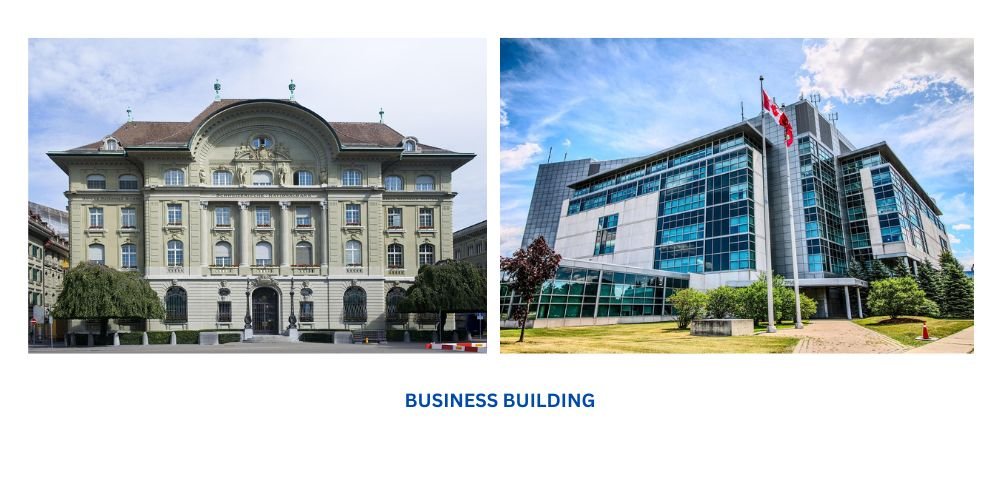
Business buildings are structures designed primarily for conducting various commercial activities, including business transactions, record-keeping, and professional services. These buildings serve as spaces for offices, banks, professional institutions, courthouses, libraries, city halls, and town halls, where the primary function is the transaction of public or private business or maintaining records and books. They may be single buildings or clusters of establishments, both small and large. Examples include offices for accountants, doctors, and dentists, as well as service facilities like newsstands, barber shops, and beauty parlours. Minor office spaces within larger operations are classified according to the building’s primary use.
Mercantile Buildings
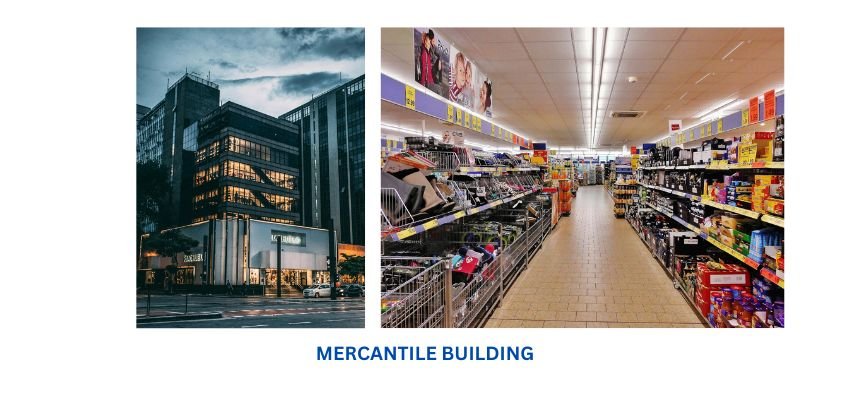
Mercantile buildings are structures or portions of structures designed for displaying and selling goods, whether for wholesale or retail purposes. This category includes shops, stores, and markets. The majority of these buildings serve wholesale and retail functions.
Additionally, facilities such as offices, storage areas, and services that are directly related to the sale of merchandise and are located within the same building fall under this classification. If a building is primarily used for a different purpose but includes minor retail or merchandising activities, it should be classified based on its main use.
In summary, buildings used for shops, markets, stores, or wholesale and retail activities are included in this category.
Hazardous Buildings
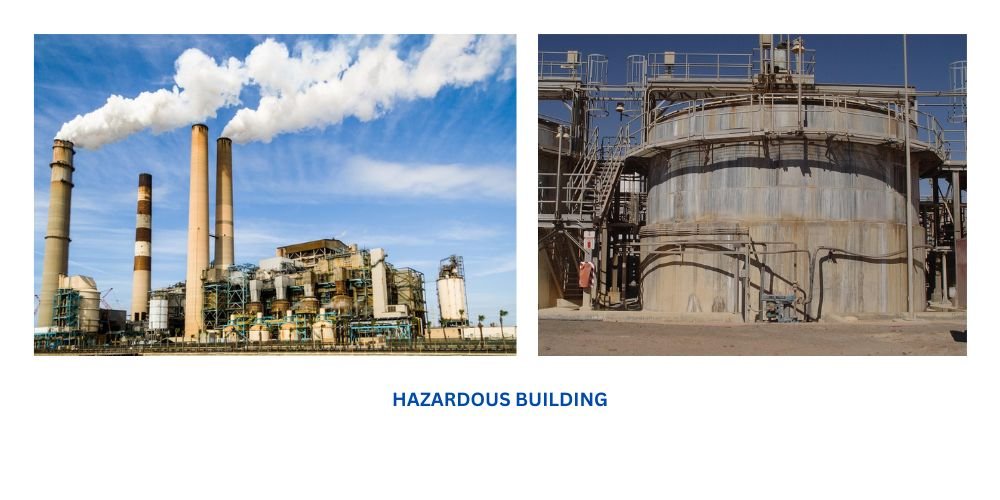
Hazardous buildings are structures or parts of structures used for the storage, handling, manufacturing, or processing of materials that are highly combustible, explosive, or present significant risks, including rapid combustion, the production of poisonous fumes, explosive reactions, or dangerous gases. These buildings handle materials that are toxic to living things, corrosive, or produce flames, fumes, or gases that are irritant or corrosive. They may also involve the processing of substances that result in fine particles prone to spontaneous ignition.
These buildings have extra safety measures because the things inside are risky. They’re not places where regular people can just walk around. They’re built to keep dangerous materials safe and prevent accidents.
Storage Buildings
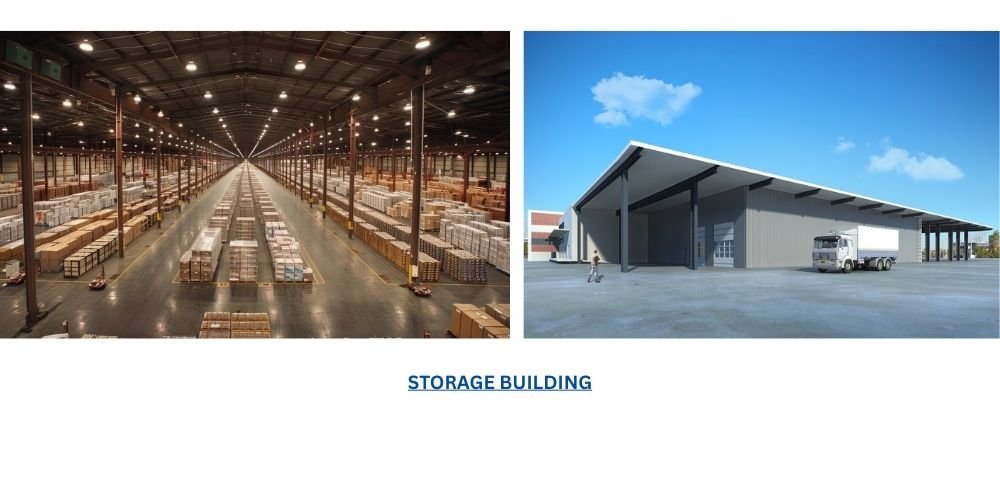
Storage buildings are structures or parts of structures used primarily for the storage or sheltering of goods, wares, merchandise, commodities, vehicles, or animals. These may include incidental activities such as servicing, processing, or repairs. Examples include warehouses, cold storage facilities, freight depots, transit sheds, storehouses, truck and marine terminals, garages, hangars (excluding aircraft repair hangars), grain elevators, barns, and stables.
These buildings are not for storing really dangerous stuff that could explode or catch fire easily. They’re just for keeping regular goods and items.
Industrial Buildings
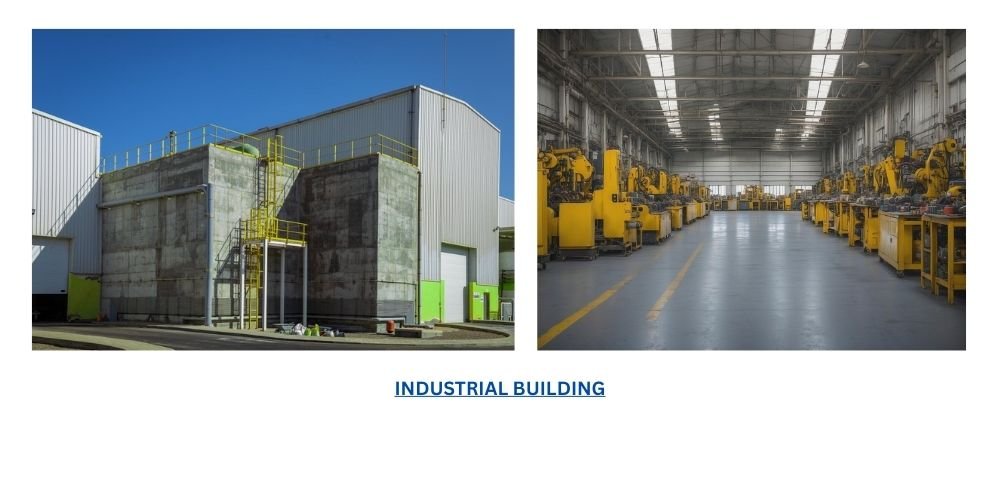
Industrial buildings are structures or portions of structures used primarily for manufacturing purposes, where products or materials of various types and properties are fabricated, assembled, or processed. This category covers a wide range of facilities, including assembly plants, laboratories, dry cleaning establishments, power plants, pumping stations, smokehouses, gas plants, refineries, mills, dairies, and sawmills. They are essential for activities involving the manufacturing or processing of goods, often requiring specialized equipment and facilities.
Conclusion: After reading the above classification of buildings, you now know all the different kinds of buildings and how they’re made for different jobs. This means you can pick the perfect type of building for your next home, office, or whatever you need. The great advantage is that you can combine different building types to create the ideal structure tailored to your needs.
You now have insights into the different types of buildings in civil engineering, as well as an understanding that each building’s design differs based on its intended purpose.



